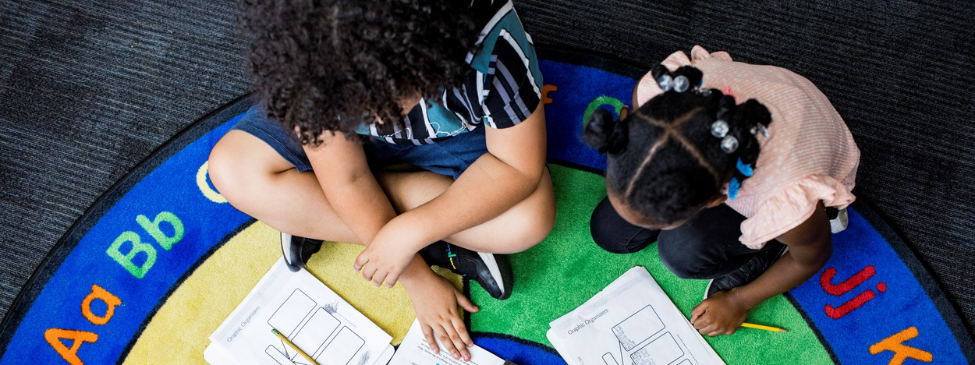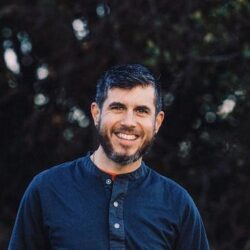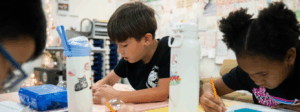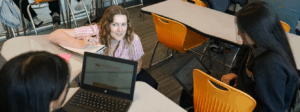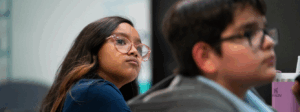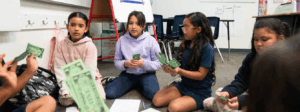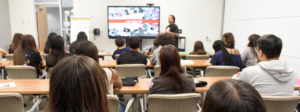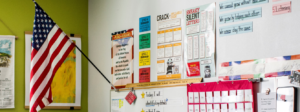At TNTP, we are committed to ensuring that multilingual learners have the linguistic supports they need to access grade-level appropriate, engaging, and culturally sustaining academic experiences. During Multilingual Learner Advocacy Month, we are honored to share the personal perspectives of former multilingual learners on opportunities and challenges from the field.
In this blog, Daniel Pastrana, Senior Manager of Academics & Multilingual Learners at TNTP shares a reflection of how his journey to reclaim his language and cultural identity shaped his commitment to breaking down barriers and expanding opportunities for the next generation of emergent bilingual students and multilingual learners.
We invite you to join TNTP for a panel discussion on Expanding and Implementing Dual Language programs on April 20 at 6 p.m. ET. Register for the panel here.
“Language is culture. Language is identity. Language is access. Language is a civil right.” This simple, yet profound message was printed on my department’s t-shirt in 2017, the year I transitioned from teaching in a dual language classroom to a district position as a Spanish literacy specialist in the Oakland Unified School District in California. Sadly, over time, the t-shirt faded and shrunk, and still I wore it proudly and often. Why? Because I wanted everyone to know that I represented the potential summed up in those four lines. The message became a mantra throughout my career as I embraced my cultural and linguistic identities. This wasn’t always the case.
I am the child of two immigrants from South America. My father and mother immigrated to Jackson Heights in Queens, New York, from Colombia and Ecuador respectively in the late ‘60s and early ‘70s. At 18 years old, my father landed in the United States and, against all odds, opened pathways of economic and social mobility for my family over the next two generations. He taught himself English while working part-time at a grocery store. Within a year, he enrolled in the New York City College of Technology of the City University of New York. As he began his career as an engineer, we moved around and eventually landed in a small, primarily white suburb of New Haven, Connecticut.

Daniel as a child with his father, Camilo.
My earliest memories of language and culture were conflicted, as my home life and school life were constantly at odds. At home we spoke only Spanish, ate Ecuadorian dishes that my mother prepared, and traveled often to visit family. Whether it was road trips to New Jersey to see my first-generation Colombian cousins or a big trip to Ecuador during summer break to visit extended family, my parents always kept us connected to our roots. But by the time I entered kindergarten, my teachers stopped pronouncing my name the way my parents intended it to be pronounced, as Daniel (phonetically, Dah-knee-el, in English). Instead, they shortened it to “Dan.” As a light-skinned, white-passing, young student who did not see himself reflected linguistically or culturally within the classroom, I felt a strong pull to assimilate and quickly began hiding who I was to fit in.
I recall the excitement in my father's voice when he suggested that I make flashcards to teach Spanish to my first-grade classmates during “show-and-tell.” As a father of two beautiful emergent bilingual children myself, I cannot fathom what it must have felt like for my father to hear his seven-year-old son outright reject the idea of sharing what was perhaps the largest part of our family’s culture and identity—our home language. This process of assimilation continued throughout my childhood and early adolescence to the point where I eventually felt disconnected from my cultural upbringing.
Thankfully, before I hit my 20s, I realized that I needed to reclaim the biggest gifts my parents passed on to me—language, culture, and identity. This awakening landed me in Oakland in 2003, where I became a Spanish, dual language kindergarten teacher and accepted the tremendous responsibility of creating an educational experience that would celebrate the linguistic and cultural diversity of my students. Some 25 years later, I intentionally abandoned the name “Dan,” and got back to pronouncing my name correctly.
Today, I couldn't be prouder to have joined TNTP, an organization that is wholly dedicated to its mission of ending the injustice of educational inequity for all students—which undoubtedly includes multilingual learners and emergent bilinguals. I'm perpetually in awe of the impact we are making with school districts across the Southwest as we partner to close gaps and open doors of opportunity for the next generation of emergent bilingual students and multilingual learners.
I’ve seen this come to life in our work in San Marcos, Texas, where the district’s intentional adoption and implementation of high-quality instructional materials, coupled with the use of research-based instructional strategies, is already impacting students’ academic outcomes in just one year. In our most recent learning walks of all seven elementary campuses in San Marcos, we saw 96% of students actively engaged in developing academic language while grappling with complex texts and tasks – students enrolled in their dual language program were doing so in both English and Spanish! In my home state of New Mexico, I’m honored to be working with the Public Education Department and alongside 35 other bilingual educators to craft an instructional scope of Spanish Language Arts standards that will serve as a critical resource for bilingual educators across the state.
As we celebrate Multilingual Learner Advocacy Month, I am more dedicated than ever to the work of bringing to life the four simple statements printed on that t-shirt I had back in 2017:
Language is culture. Language is identity. Language is access. Language is a civil right.
This week, I will be moderating a panel discussion, Expanding and Implementing Dual Language Programs, taking place on April 20th at 6pm ET. I could not be more excited to share the ways TNTP is working alongside districts to implement dual language programs that affirm the cultural and linguistic assets that multilingual learners bring to their educational journey. You can register for the panel here.
